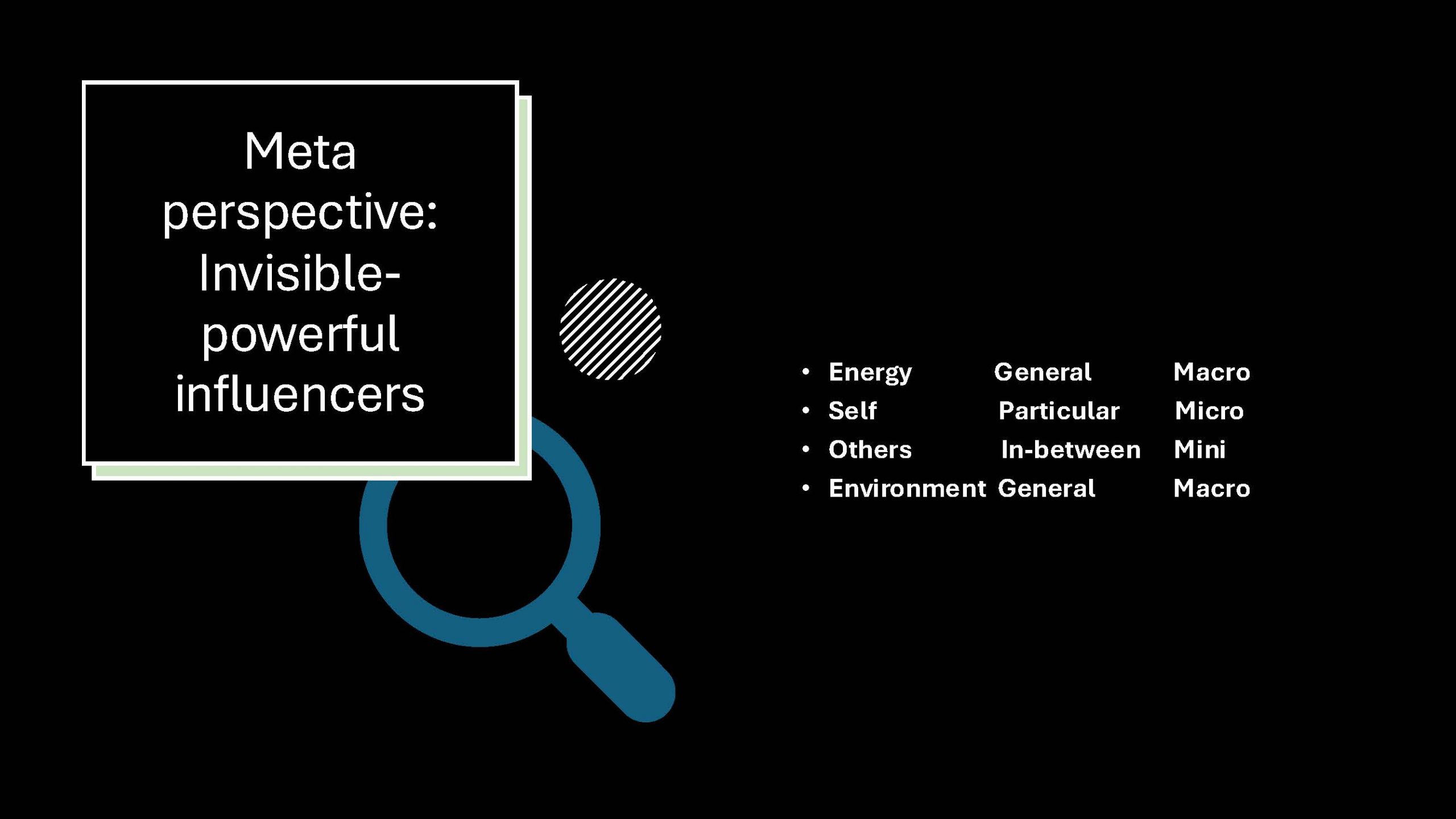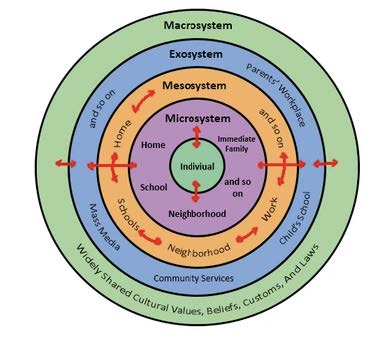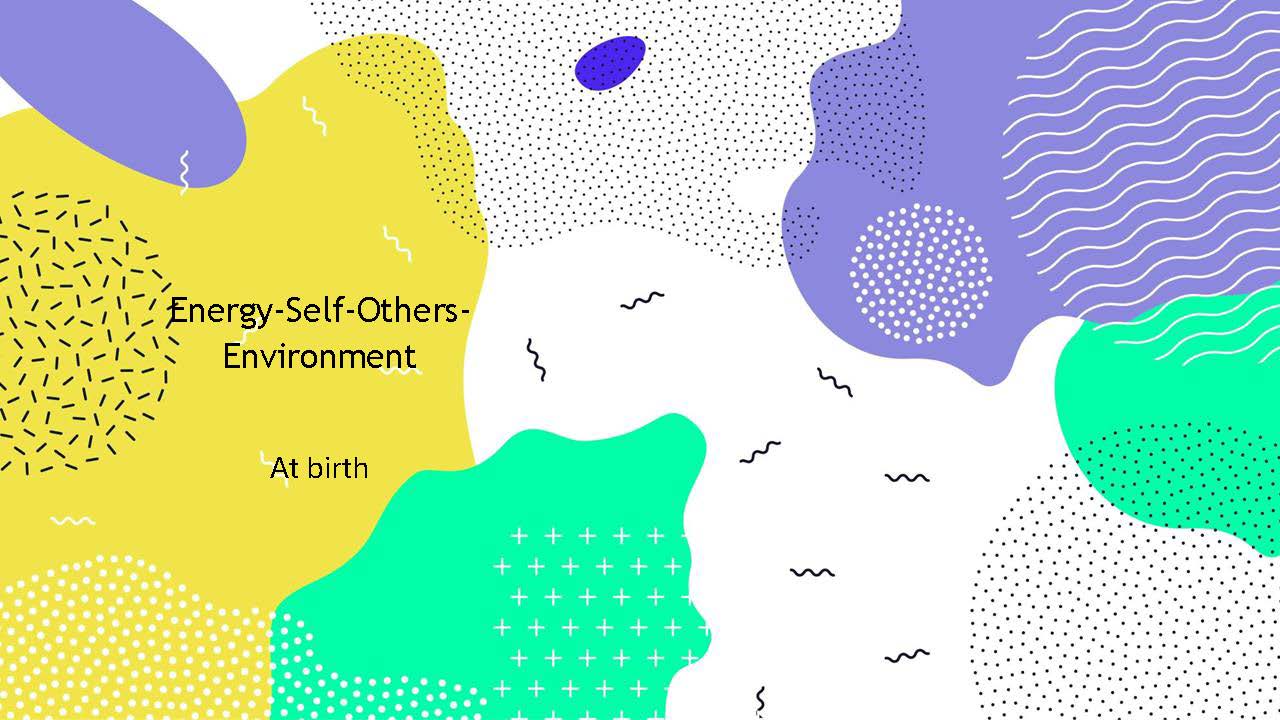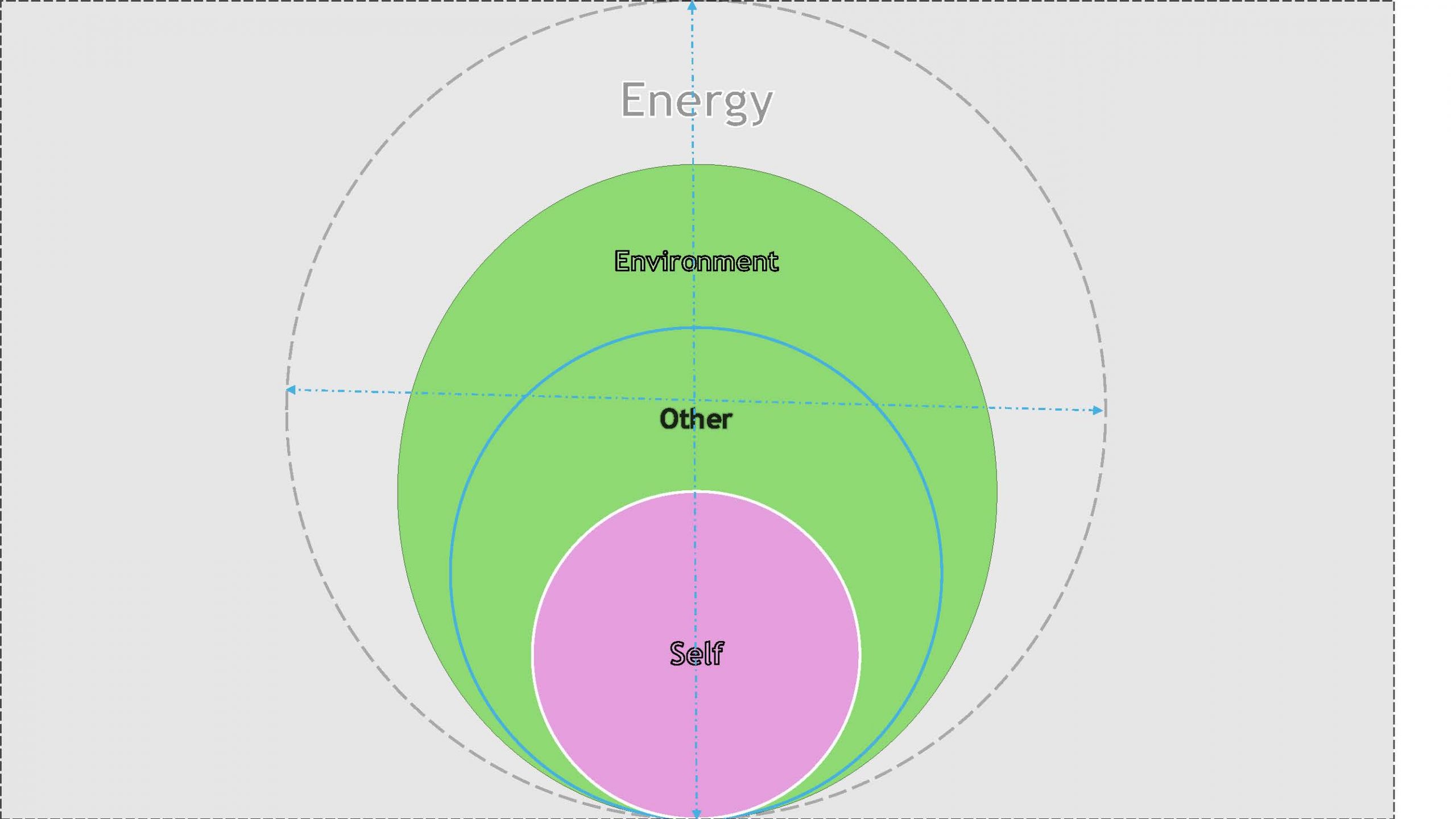Energy-Self-Others-Environment: Part 4
Dear Readers, Welcome to SC Musings, Blog 17,
After exploring Energy, Self and Others in the previous 3 blogs, we arrive at Environment in this Blog 17. Beginning with the general- Energy, we moved to the particular-Self, then landed in the in-between realm-Others, and now are back to the general-Environment. Thus, alternating between general and particular, we shift from macro to micro to mini to macro perspectives, attempting to get a meta perspectives of these invisible, yet powerful influencers of our lives.

We will delve into the intricate relationships between Energy, Self, Others and Environment after making meaning of Environment. This exploration is to facilitate our MRR-Managing, Regulating and Refining these influencers for harmony and balance.
Merriam Webster describes Environment as:
“ Descending from the Middle French preposition environ “around,” environment , in its most basic meaning, is “that which surrounds.” When preceded by the and unmodified, it usually refers to the natural world… In a less physical, more extended sense, it may signify the circumstances and conditions that make up everyday life.”
So, let’s stay with this understanding that Environment is our surrounding and context. Our surrounding contains the physical- greenery, buildings, furniture, artifacts, people, and the likes around us; the manner in which we present ourselves contributes to the Environment and the reverse also happens. We have looked at the external environment; our internal environment also contributes to our Environment, and let’s understand how. Self is composed of our internal environment, which, as we have discussed in earlier blogs, is made up of 6 layers and dimensions- the physical, emotional, intellectual, behavioral, social and spiritual layers and dimensions (NG Holistic Model, 2025). Our physical, behavioral and social layers, directly impact the Environment, triggered by the internal emotional, behavioral and spiritual layers. This impact might be subtle, or loud and powerful when power and authority come into the forefront. These influences have been captured by Bronfenbrenner’s ecological system theory, represented in Figure 17.2.

A Russian born, American psychologist, Bronfenbrenner in his Ecological System Theory, traced and explained individual, human development, impacted by the Environment and vice versa. His impact on policies for equal rights to African American was significant. Environment, thus, maybe viewed as comprised of multiple systems, listed below, with their respective features:
- Microsystem: immediate family, neighborhood, school
- Mesosystem: home, school,
- Ecosystem: Parents work place, community,
- Macrosystem: Cultures, beliefs, values, laws.
A systemic views offers but a glimpse of the apparent and indiscernible domains and features of the Environment.
The complexities of Environment leads us to the individual in it, which will be unravelled using the case study of Aram, a 25 year old, fascinated by movies, with a dream to become an actor. The eldest of three, Aram was plagued by the accumulating debts in his family, as he woke up daily to debtors hammering on their doors. The experience registered deeply in him, with anxiety and fear becoming his constant companions as her grew up, accompanied by veiled comments from his affluent circle of relatives and friends. Despite the backward pulls, Aram graduated, helped clear the familial debts and stepped into a senior position in the film industry. Today, Aram married and settled in personal and professional life, is pursuing various avenues to increase wealth personally and for his family members. Multitudes of factors in the environment which affected Aram, spurring him to reclaim his individual and the family’s dignity become evident.
An individual identity at birth is merged and submerged with the Environment, and continues this way for about 3 to 4 years, when the individuated Self begins to energy. This diffused self is captured in Figure 17.3.

As consciousness of Self-Others-Environment opens up and blossoms due to individuation, awareness also begins to grow and develop. This developmental progression is systemic and holistic, wherein Energy is the vital link connecting the different parts.
Thus, an attempt has been made in this Blog to link the mystery of birth, individuation, socialisation, which culminates in the nestled Self, presented in Figure 17.4.

Self-nestled in and engulfed by the surroundings is a dynamic entity. Exploring these concepts in depth has brought a deep sense of awe and wonder in me about existence and subsistence.
Dear Readers,
Trust you are with me in this journey of discovery of Energy-Self-Others-Environment. In our next Blog 18, we will conclude this topic with a discussion on MRR- Managing, Regulating and Refining Energy to enhance the dynamic function of Self, which would impact Others and the Environment.
Looking forward to seeing you next fortnight,

References
Bronfenbrenner, U. (1994). Ecological models of human development. In International Encyclopedia of Education, Vol. 3, 2nd. Ed. Oxford: Elsevier. Reprinted in: Gauvain, M. & Cole, M. (Eds.), Readings on the development of children, 2nd Ed. (1993, pp. 37-43). NY: Freeman.
Bronfenbrenner, U. (1995).Developmental Ecology Through Space and Time: A Future Perspective in Examining Lives in Context: Perspectives on the Ecology of Human Development, edited by P. Moen, G. H. Elder, Jr., and K. Lüscher Copyright © 1995 American Psychological Association. http://dx.doi.org/10.1037/10176-018.
Ecological System Theory. (2014-2024). https://testbook.com/question-answer/according-to-bronfenbrenners-theory-of-develo--60a37ea07e26f8af1f30cd25
Environment (2024)t: https://www.merriam-webster.com/dictionary/environment
NG Holistic Model: https://www.nityagurukula.org/